From Lai Chau city, we booked a car to Phong Tho district. Sitting in the taxi, we heard the driver mention the name Vang A Chinh - the famous village chief of the district, who led the whole village to do tourism to make Sin Suoi Ho what it is today.
At 9pm, we arrived at Vang A Chinh’s homestay, right on a crowded weekend. While the staff were busy cooking, washing dishes, cleaning…, we were still suggested to enjoy a pot of chicken hotpot at that awkward hour.
A moment later, a steaming pot of chicken hotpot was neatly arranged on the table. While the staff was still busy with new and old customers, a tall, agile man appeared.
The house ran out of ice and bottled water, but he didn't ask us to "understand", but immediately got on his motorbike and took care of all the guests' needs within a few minutes.
He is Vang A Chinh - the "soul" of Sin Suoi Ho, the person who went from house to house to encourage people to quit drugs, the person who donated 1,000m2 of land to build roads and open markets.
Sitting in the middle of his family's large yard, with vast mountains and clouds in front of him, Mr. Chinh told about the old days - the days when the whole of Sin Suoi Ho was still immersed in the intoxication of opium.
“In the 80s and 90s, the whole village had 80 households. Almost every house had a few addicts. In 1990, the army entered the village and cut down all the opium poppies so that people could focus on economic development. Many people still secretly escaped into the deep forest to illegally plant opium, but they were all discovered and destroyed. By 1995, Sin Suoi Ho was completely free of opium poppies.”
At that time, Vang A Chinh was a young man in the village. Together with local officials, he actively encouraged people to go to drug rehabilitation.
“There were many people who were high on drugs, they beat me. But what I said was right, they also saw that people who had recovered from drug addiction were doing well in business, bringing economic benefits to their families, so gradually they listened” – The village chief born in 1975 said.
By 2004, Vang A Chinh was a police officer in the commune. At that time, Sin Suoi Ho was still very poor. But putting aside his big dreams, he did small things first. He knocked on doors to persuade people to quit drinking.
“Alcohol is like a forest ghost, it makes your body lazy and your people poor. When you are drunk, the ghost of alcohol blurs your eyes and deafens your ears, so how can you hear and see?”
Such a difficult task, but A Chinh was able to do it. Now, no one in Sin Suoi Ho drinks alcohol, no one stores alcohol in their homes. “Unless a guest wants to drink and buy it, then the locals go buy it for them,” A Chinh affirmed firmly.
Having given up opium and alcohol, people began to grow rice, corn, potatoes, and cassava. Sin Suoi Ho began to reduce poverty. In addition to growing rice and other crops, many families also grew cardamom. The income from cardamom was quite good.
As the economy improved, Mr. Chinh began to think about improving the quality of life for his family. He told his wife and children about his intention to redecorate the house and plant trees and flowers.
“Seeing that my village has beautiful scenery and cool, pleasant weather, at first I only intended to beautify my family. But luckily later many people knew about it.”
At first, teachers came to the village to teach. They took pictures and introduced them to many people in the lowlands, so the number of tourists coming increased day by day.
In 2012, the road to the village was still a muddy, slippery dirt road every rainy season. The 37-year-old village chief at that time thought to himself that if he wanted to develop tourism, he first had to have a nice road for tourists to enter the village.
But where is the money, where is the land?
Vang A Chinh thought that he had to do it first before people would listen. His family voluntarily donated 1,000 square meters of “golden land”, then mobilized people to donate a little more from each household. The money for cement was provided by the State. Each household contributed a few hundred thousand for rocks, gravel, and sand by deducting it from the “forest money” (the money the State pays to households that look after and protect the forest each year).
That was his plan, but putting it into practice was not easy. Many families agreed immediately, but many others objected. Some refused to donate their land. Some said, “I have been walking on this dirt road all my life, why should I waste time, effort, and money building a new road?”
“Someone challenged me, ‘If this village can build a road, I will put my hands on the ground and walk with my butt in the air’. Some people refused to donate land or money. They said, ‘When the road is finished, I won’t walk, I will carry my bike across’” – Vang A Tua, son of Village Chief Vang A Chinh, recalled his father’s most difficult days.
But then, with perseverance and ingenuity, together with the prestigious elders in the village, Mr. Chinh gradually convinced most of the villagers. There were people who firmly opposed until the last minute, but when they saw everyone unanimous, saw the road taking shape every day, they joined the whole village in building the road. That was a tacit nod of acknowledgement that the direction of Village Chief Vang A Chinh was the right one.
Exactly 1 year later, the 2km long asphalt road was completed, welcoming cars from the commune center to the village.
In 2014, he continued to mobilize the whole village to join hands to build a market and continue the road leading from the village to Trai Tim Waterfall. Also from this year, Sin Suoi Ho became a place name on the northwest tourist map.
500 million VND was the first amount of money Vang A Chinh spent to invest in building the homestay. “I didn’t have to borrow this money, because at that time my family already had income from cardamom” – the honest village chief shared.
More and more visitors from the lowlands came. People “incited” him to invest in beds, blankets, and food services to welcome visitors. He enthusiastically followed suit. The mattresses and blankets he bought in the early days were not as “standard” as they are now.
Having no concept of motels or hotels, he just thought that his guests would use the same way his house did. The mattress back then was not 20cm thick. The bedding was not the pure white kind used in motels.
Then the guests, because of their love for Sin Suoi Ho, were the ones to give him feedback. Knowing how to listen and be open-minded, he changed and improved his service every day.
Now, coming to A Chinh's family homestay, even though only renting a communal room for 150,000 VND/person/night, visitors will sleep well on a 1.8m wide bed, 20cm thick mattress and a set of white hotel-standard bedding.
“The thing that people commented on the most was the toilets. Visitors said that even in the village, toilets should be clean and private. I listened and rebuilt all the toilets in the style of city people.”
Mr. Chinh's family currently has 40 communal beds, 10 private rooms and 2 newly built bungalows this year.
From the initial investment of 500 million, up to now, he has "poured" 20 billion VND into his community tourism project. The village chief honestly shared: "I still owe the bank nearly 1 billion VND."
But with his family's current income, that debt is not a concern. Each year, the family's income from homestay alone is 400-500 million VND. Cardamom sales bring in 300-400 million VND/year. He also raises a few dozen goats, earning 100-200 million VND/year, not counting income from fields, crops, orchids, etc.
When his family had profited from tourism, he began to guide his fellow villagers to do the same. When they lacked capital, he guided them through the procedures to borrow from the State's policy capital sources. When they had no experience, he imparted his experience, taught them little by little, promoted the good things, and learned from the bad things from his own family's experience.
During those years, Vang A Tua was still studying at Lai Chau Community College. Now, having returned to his village and become the Party Secretary of Sin Suoi Ho village, A Tua understands more than anyone the difficulties his father had to face 10 years ago.
“It is difficult to change people’s mindset. In my father’s time, the village had many elderly people, most of whom were illiterate, so teaching people how to do tourism encountered many obstacles.
Bo Chinh had to teach everyone how to keep the village and their families clean, asked everyone not to let livestock and poultry graze on the streets, and taught everyone how to clean rooms, cook, and decorate their homes…” – A Tua said.
By 2015, when Lai Chau provincial authorities saw the potential of the village and the enthusiasm of its leader Vang A Chinh, Sin Suoi Ho was officially recognized as a community tourism village.
The Department of Culture, Sports and Tourism of Lai Chau province has started to support and guide people on how to do tourism. Classes on cooking, housekeeping, bartending, performing arts, etc. are organized free of charge in the village.
Gradually, the younger generation grew up, replacing the generation of grandparents and parents. The first young people from Sin Suoi Ho went to Hanoi to study cooking, mixing, etc., following the encouragement of the village chief.
The village youth take motorbike driving tests and learn to drive cars to transport passengers and goods. Currently, the village has nearly 40 people out of a total population of 764 with car and truck driving licenses. Seven families have purchased cars to serve their personal needs and to transport passengers.
The greatest achievement of village chief Vang A Chinh was not only building roads and opening markets. He also built a cooperative called the Heart Cooperative.
11 households pooled their capital together to build a motel and restaurant on a large plot of land at the beginning of the village. When guests arrive, the families welcome them together. The motel and restaurant of the Cooperative alone can serve 100 guests at the same time. The profit is about 300-400 million VND/year.
30 other households also participate in tourism, building their own homestays. If the number of homestays in the whole village is added together, Sin Suoi Ho can serve 500 guests at the same time.
Families without homestays also significantly increase their income from accompanying services. In the past, the highest income villagers earned from working for others was only 100,000 VND/day, but now their income from tourism is higher and more proactive.
"There is nothing better than doing tourism" - Ms. Sung Thi May, 1 of 11 households participating in the Cooperative, concluded when asked.
According to the report of the People's Committee of Sin Suoi Ho commune, in 2024 alone, the village welcomed and served more than 30,000 visitors, with revenue from tourism activities reaching more than 3 billion VND.
Starting from March, Sin Suoi Ho enters the tourist season. Visitors to the village will be guided by local guides to visit Trai Tim Waterfall, see blooming azaleas, visit the orchid garden, enjoy dishes with a strong Northwest flavor...
From a village with a 100% poverty rate, Sin Suoi Ho "transformed" under the leadership of village chief Vang A Chinh, becoming a "precious gem", a "golden village" in the true sense of the word.
Photo: Nguyen Thao, NVCC
Design: Tran Hang
Source: https://vietnamnet.vn/truong-ban-nguoi-mong-chi-20-ty-dong-bien-ban-ngheo-thanh-lang-du-lich-hap-dan-2396908.html


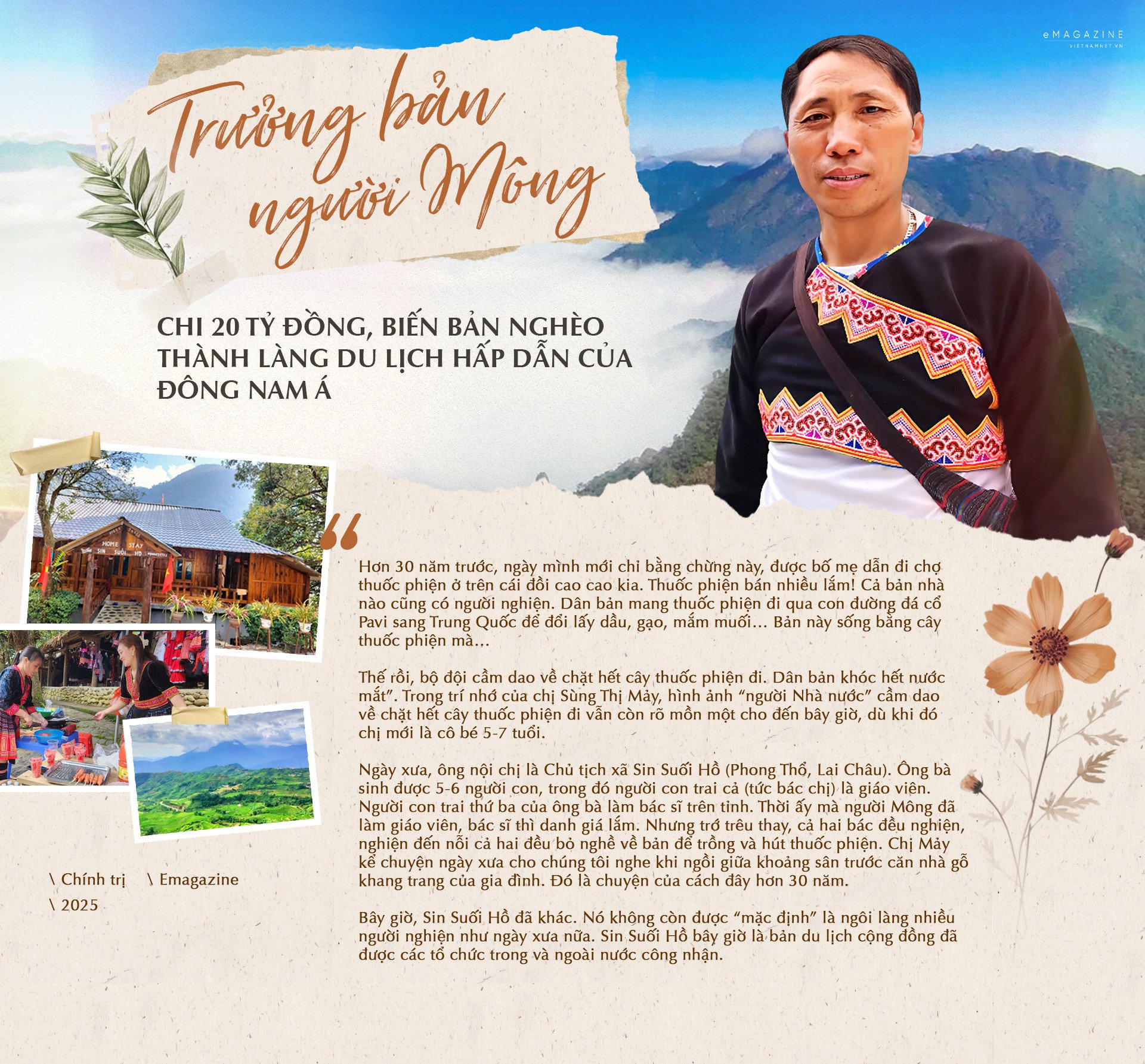

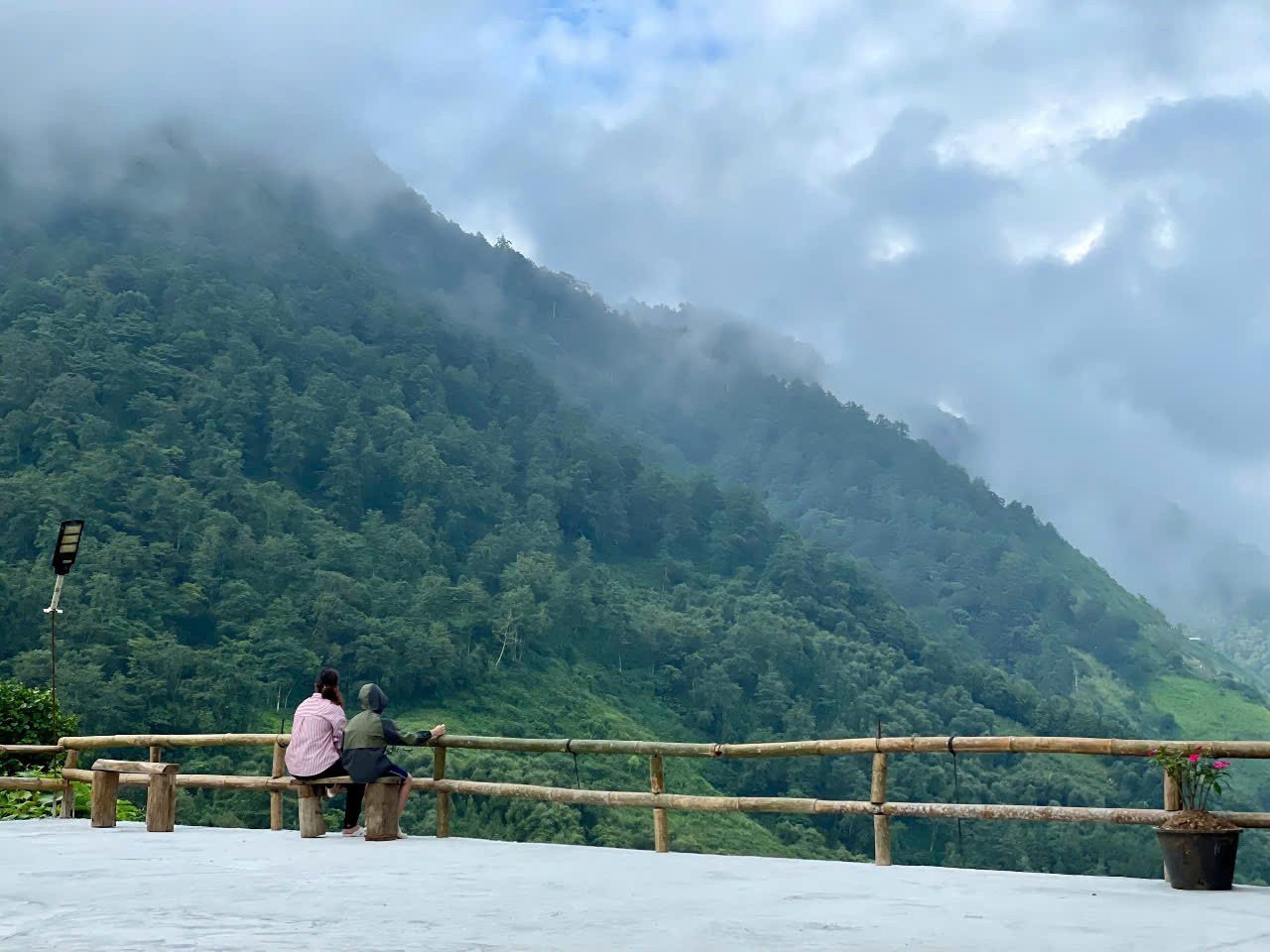
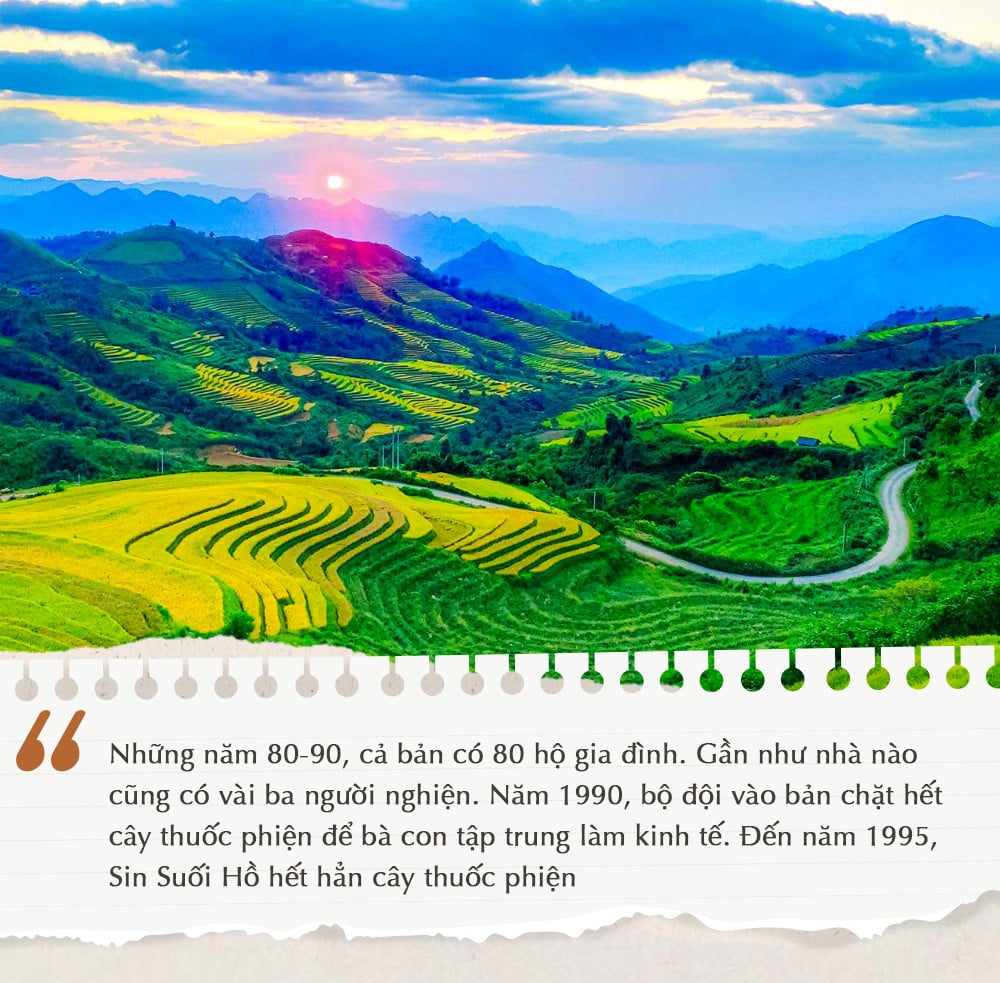
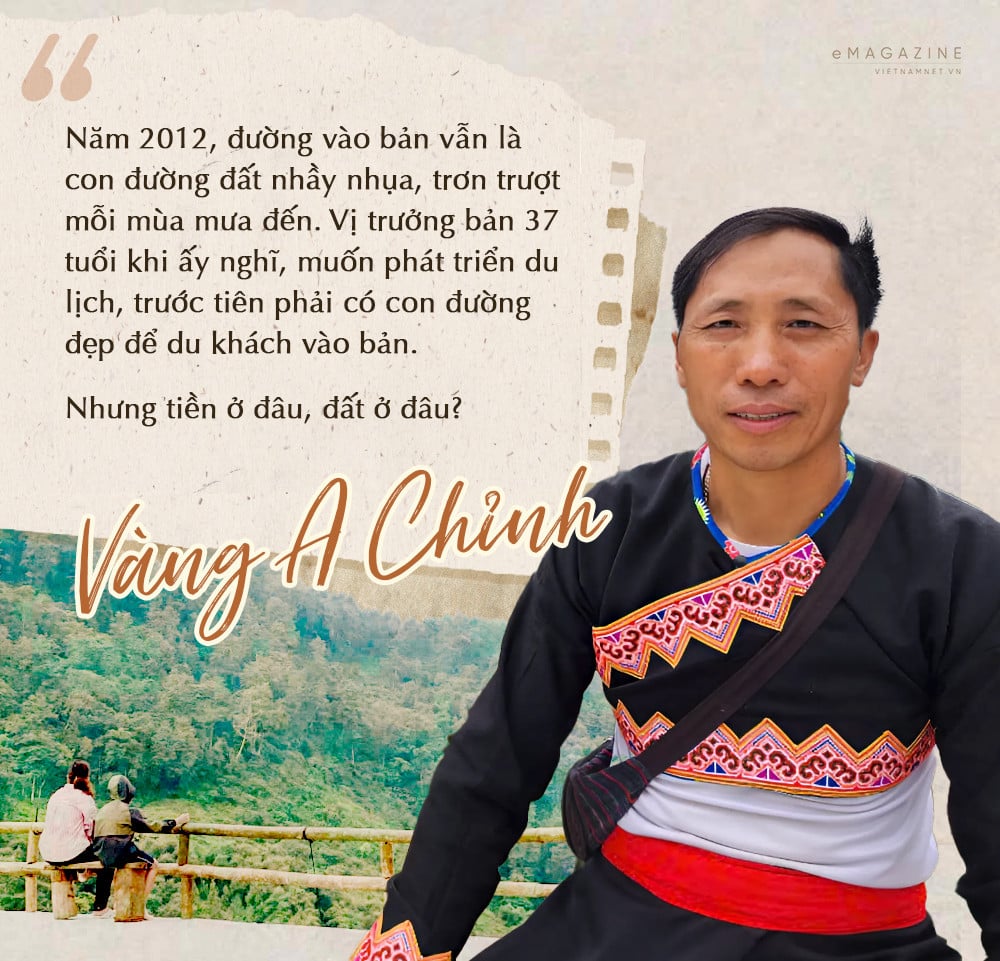

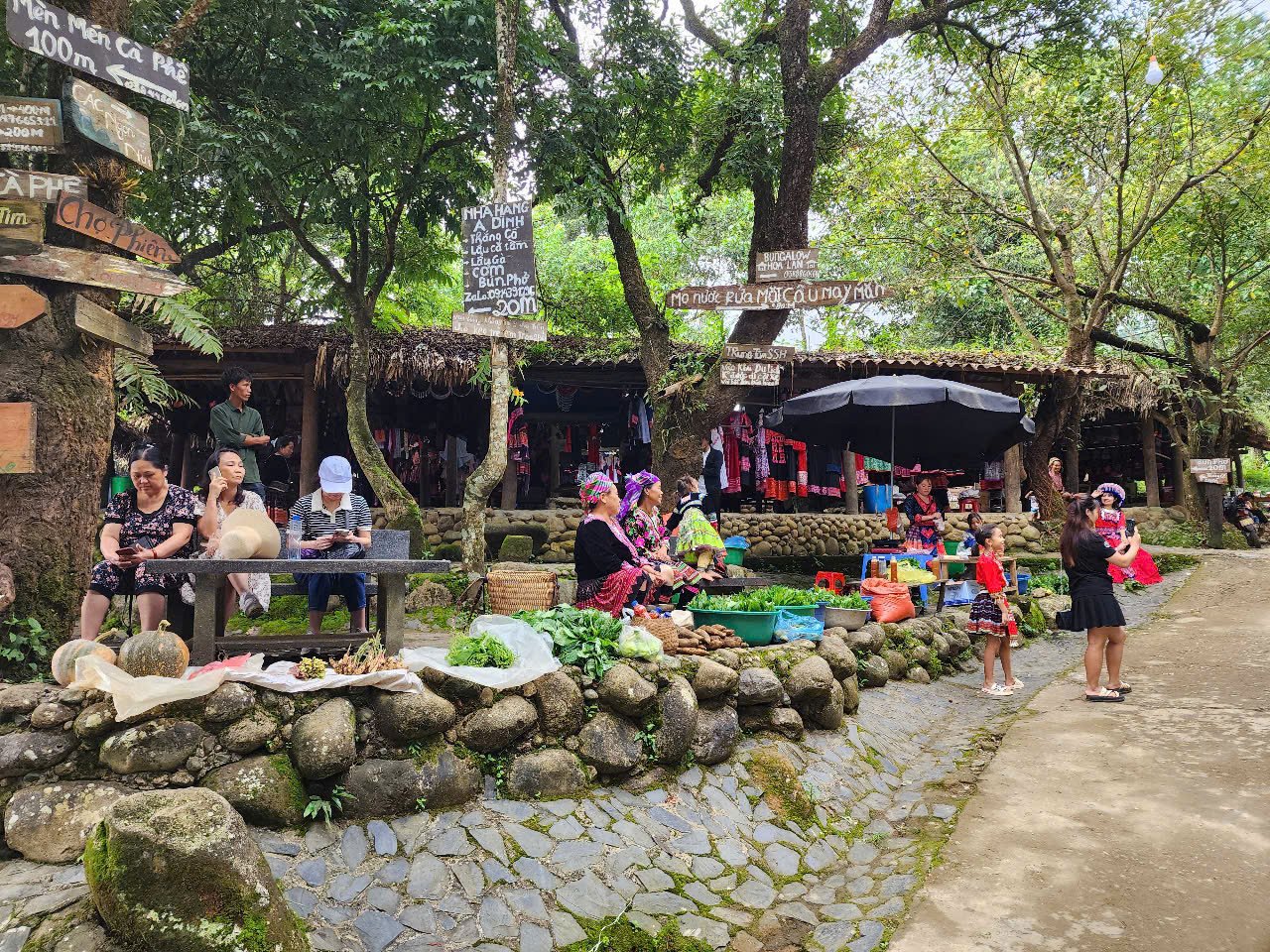

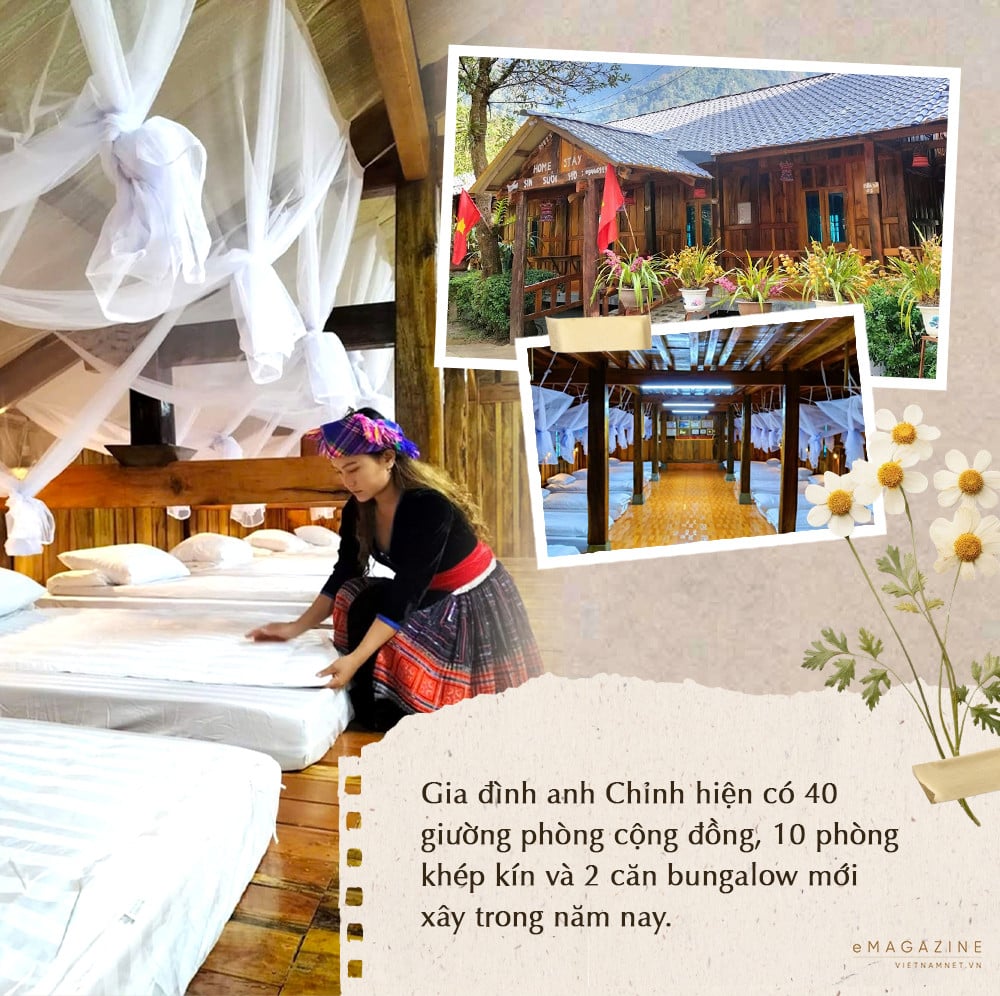
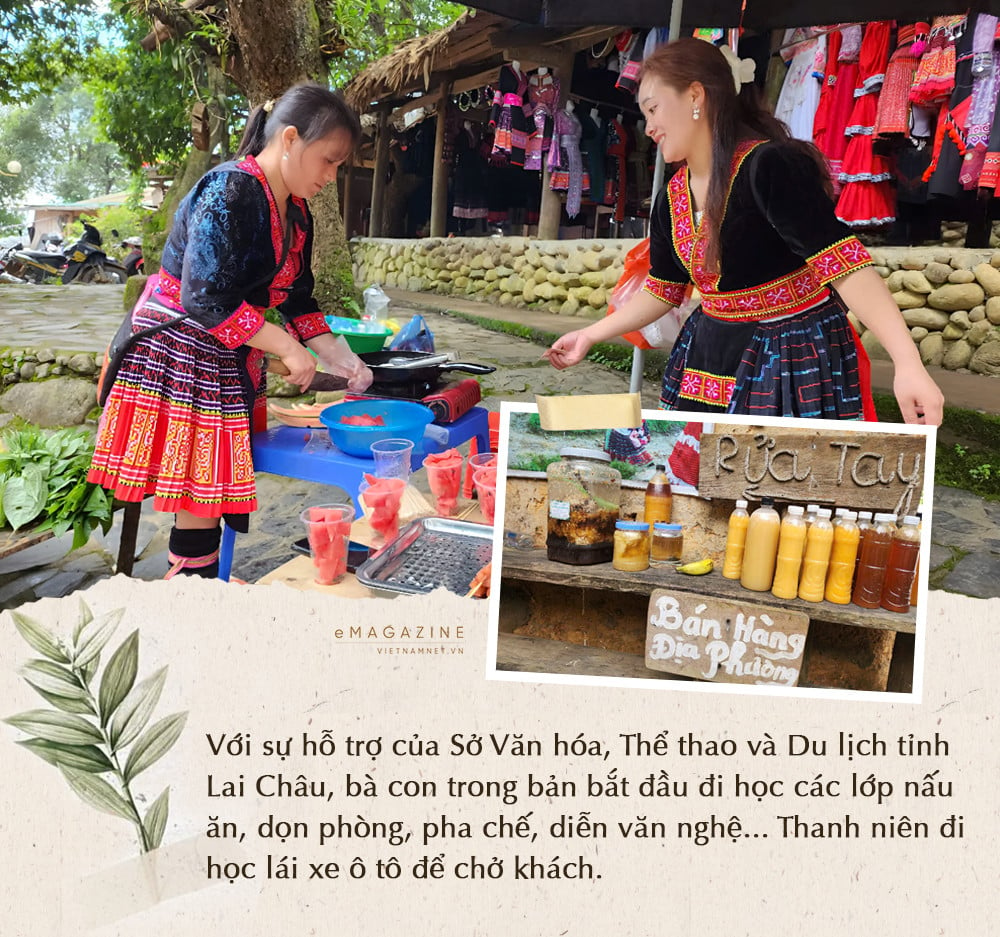
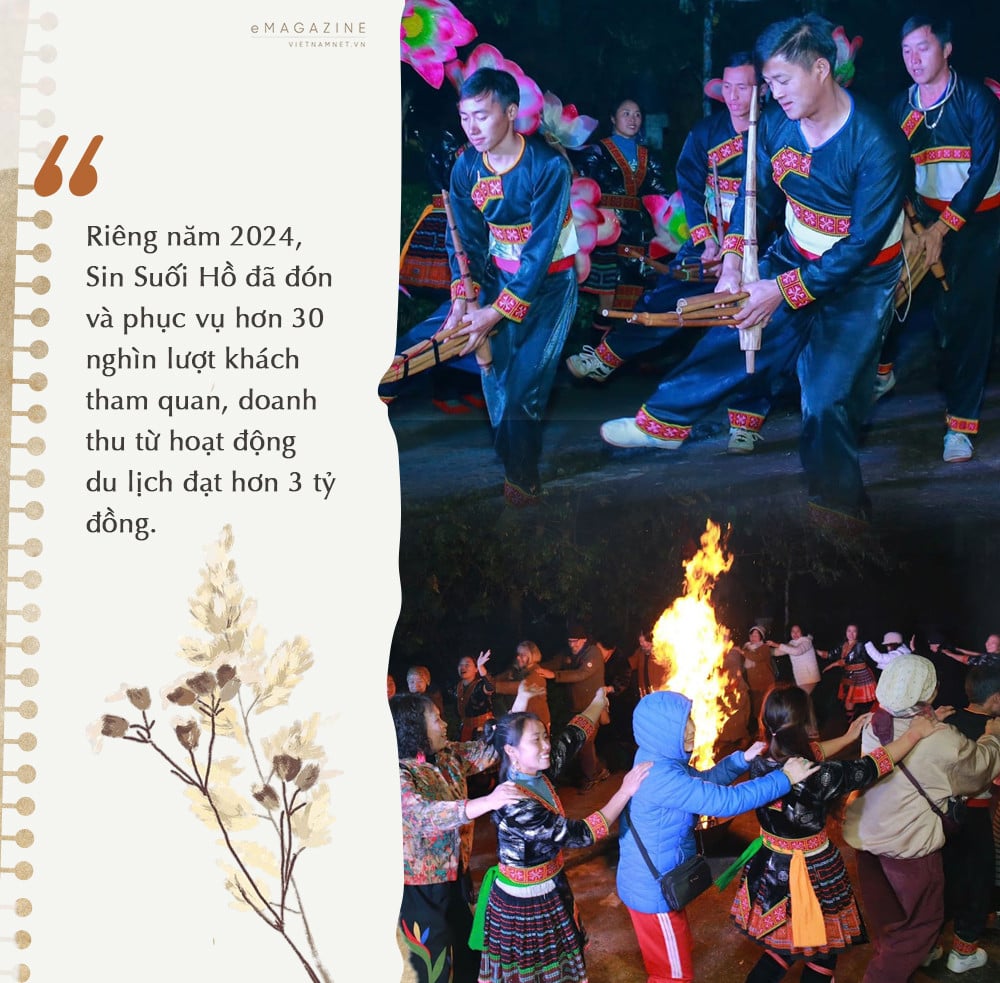
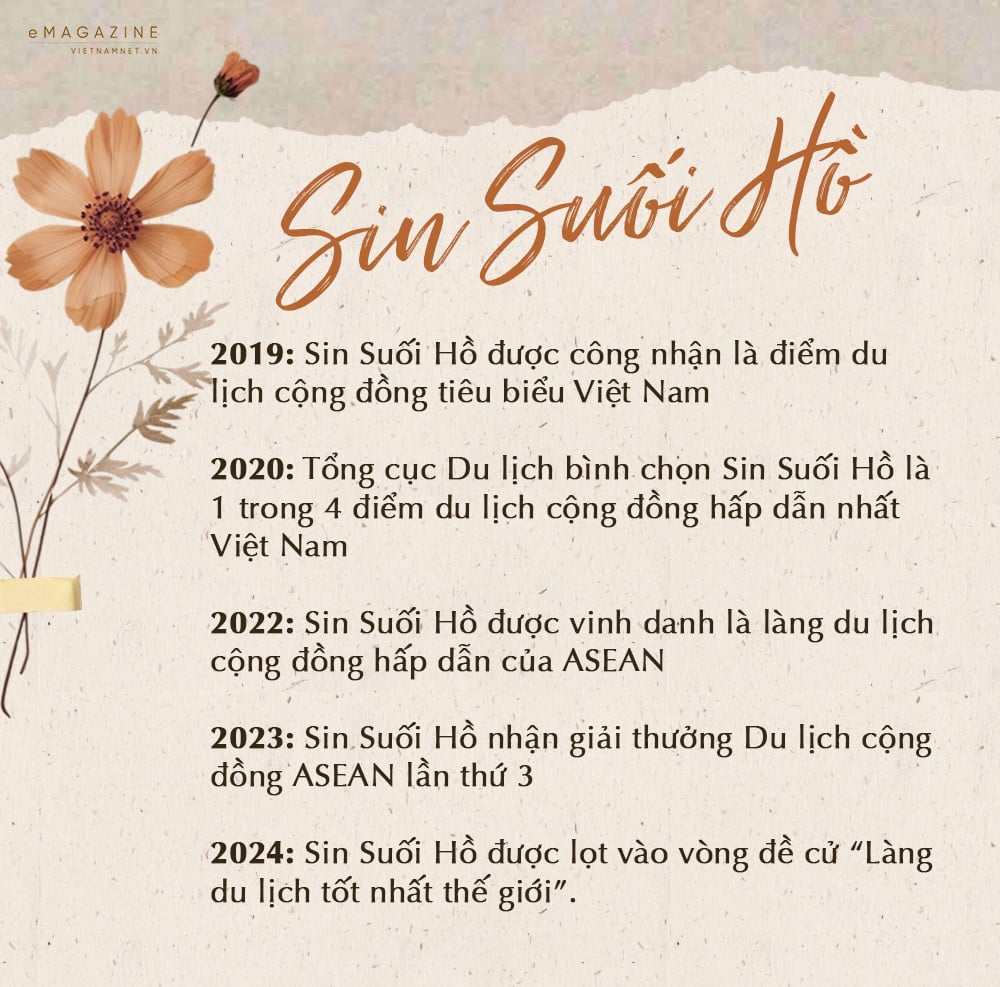
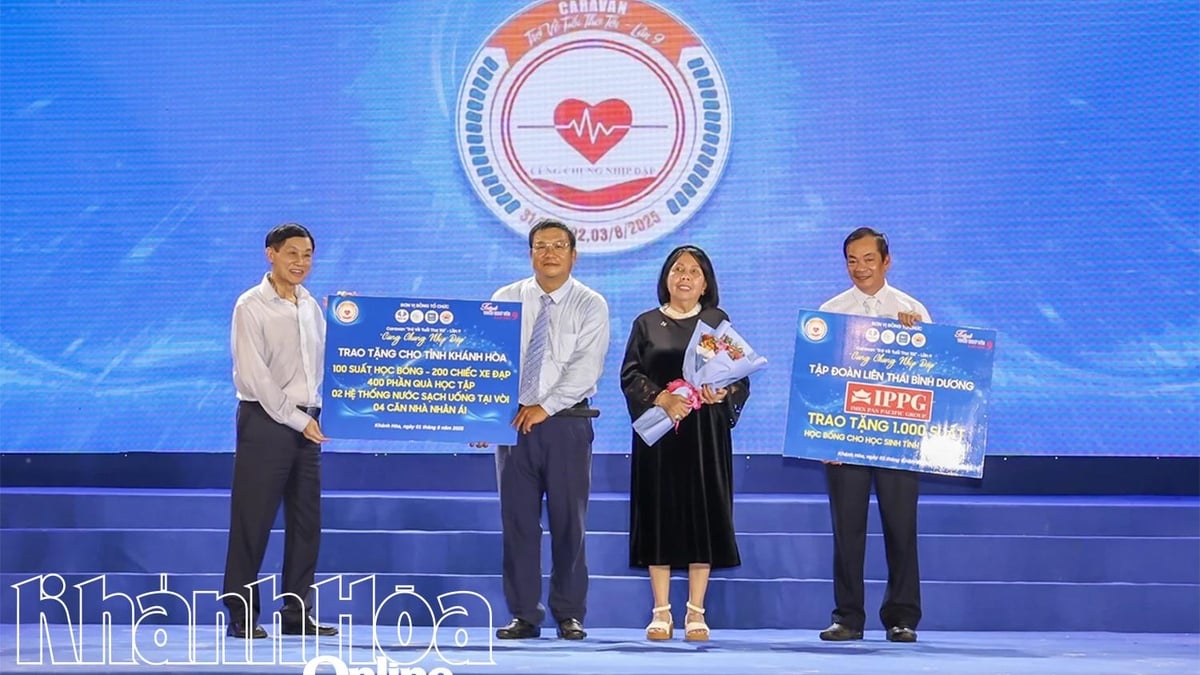

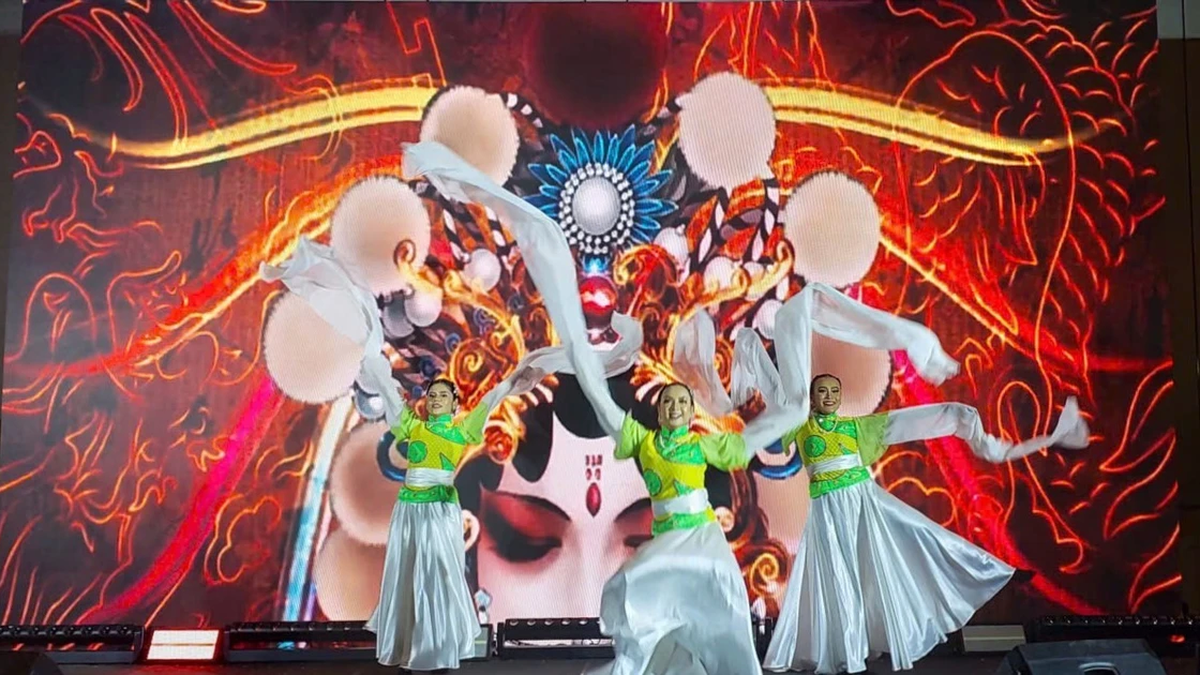
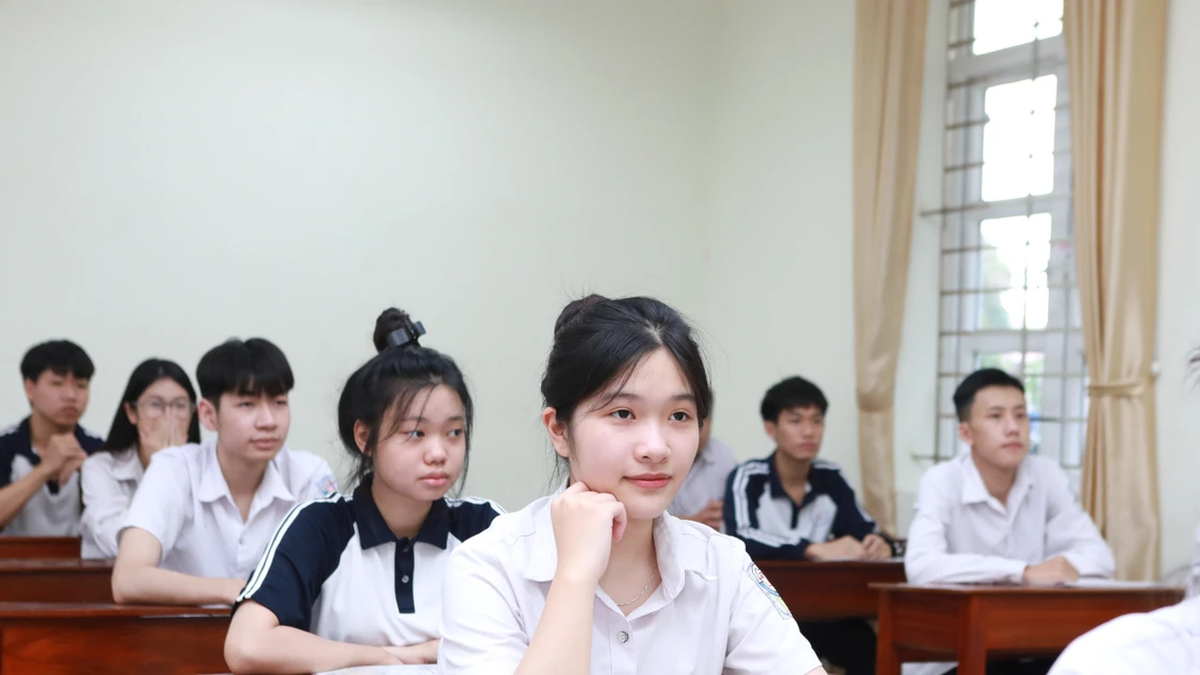
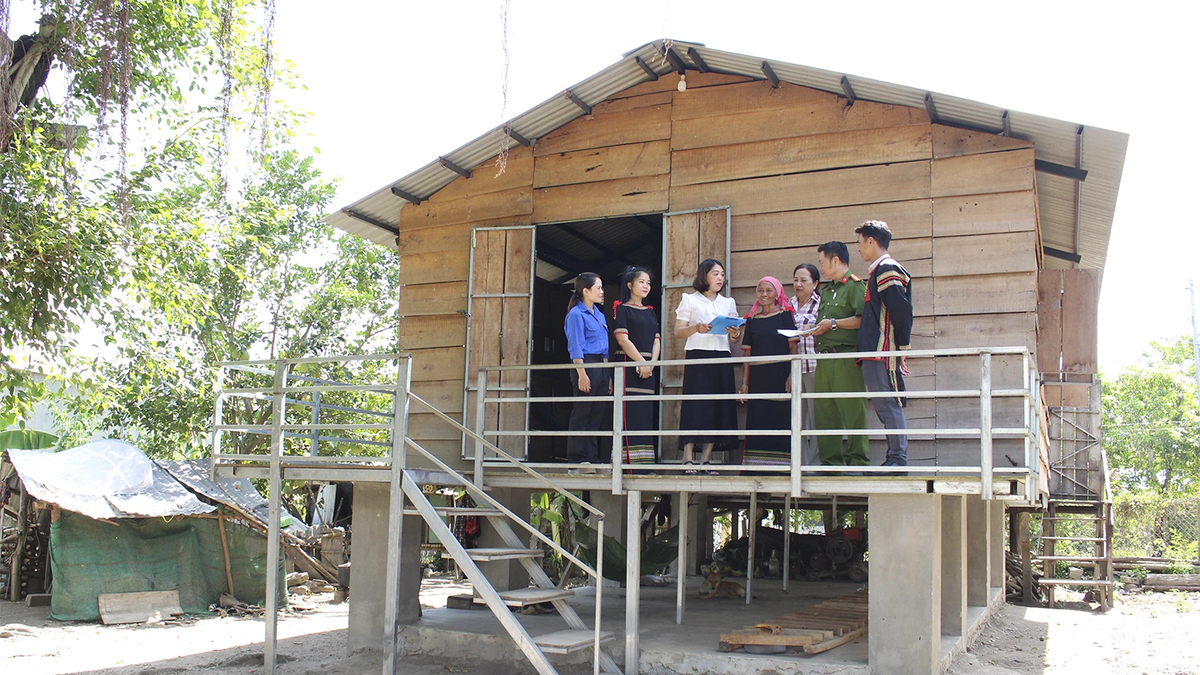


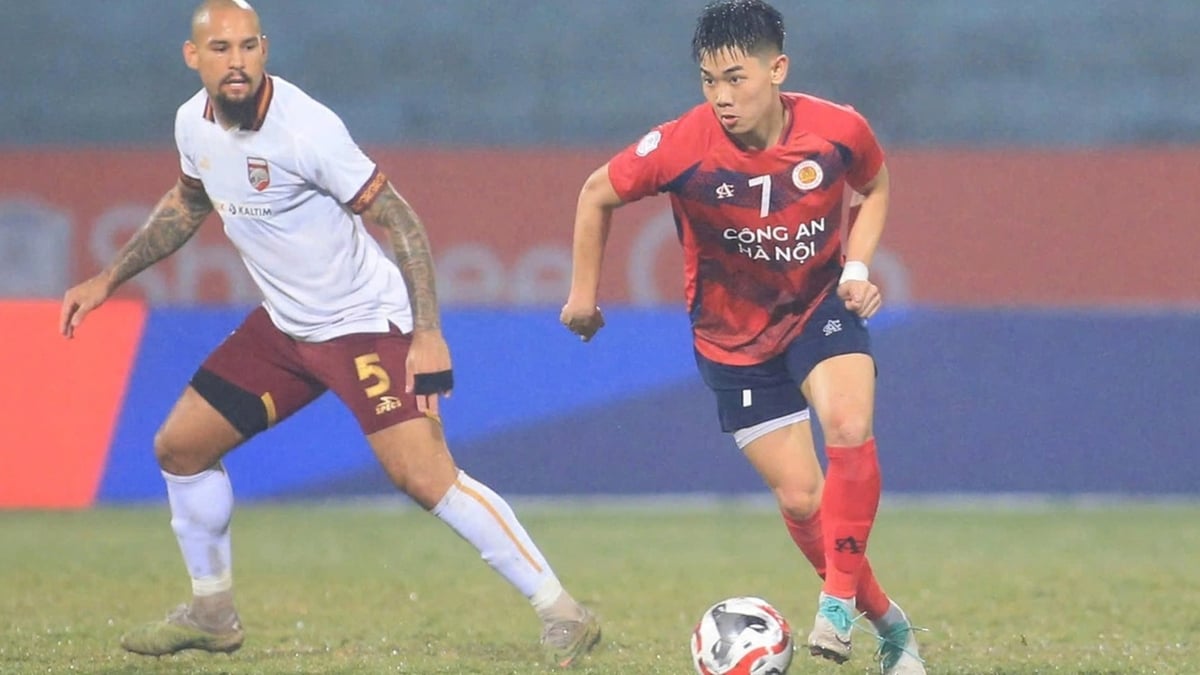

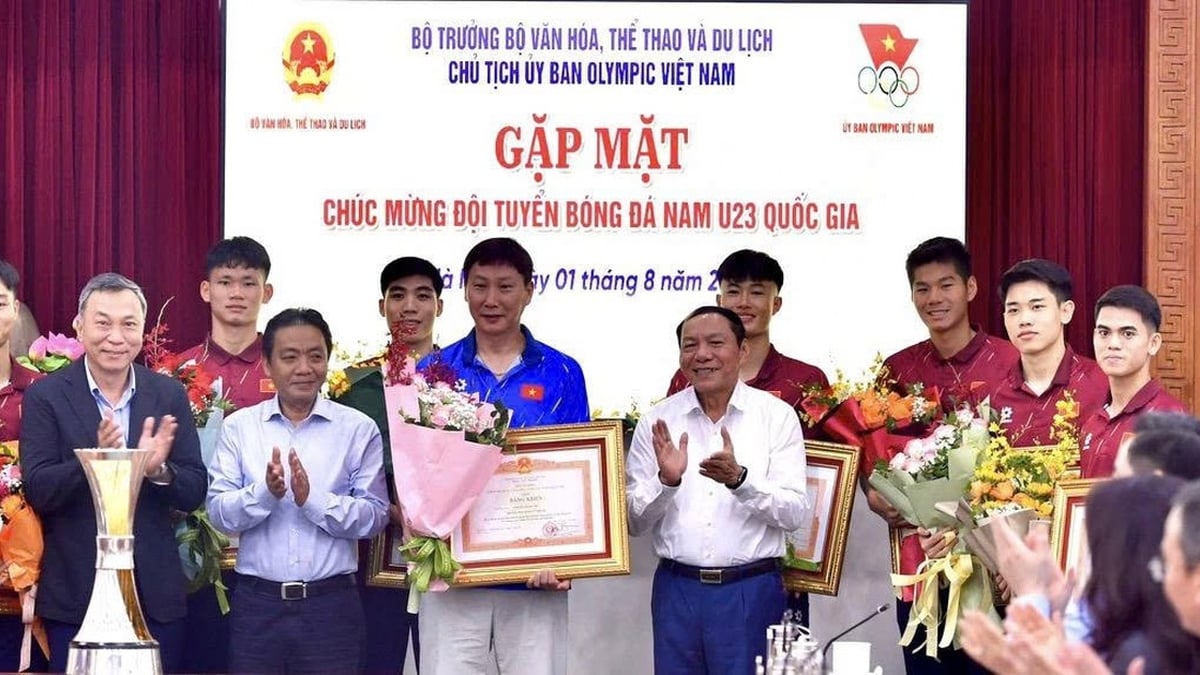












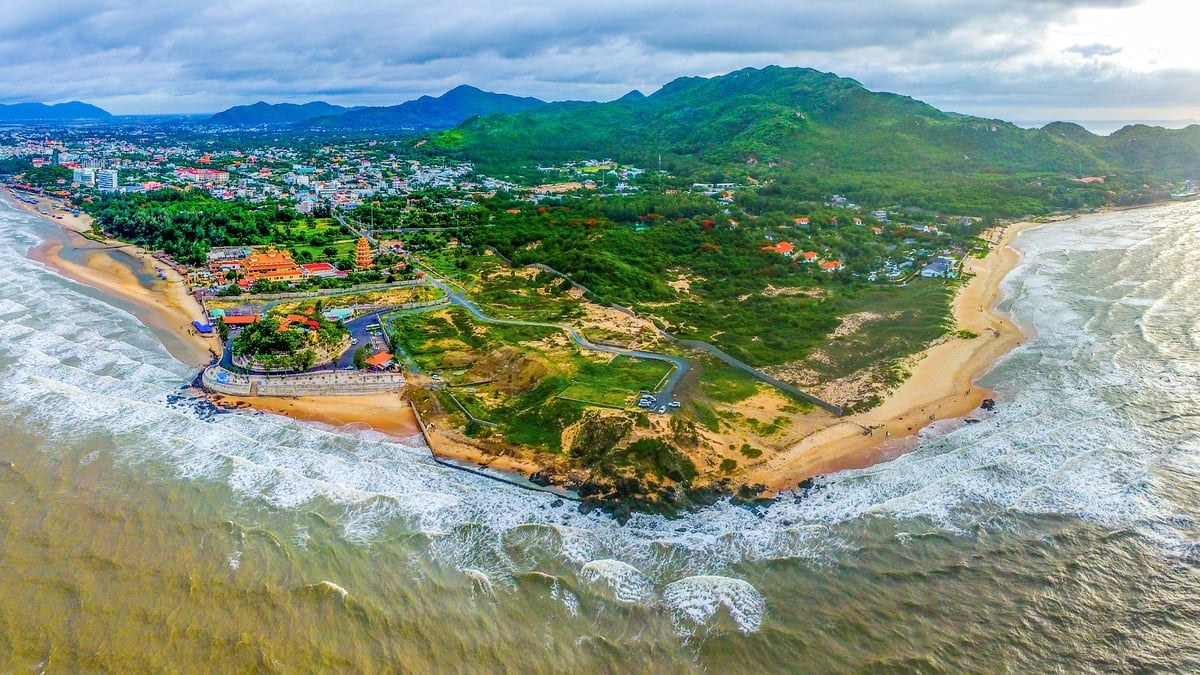
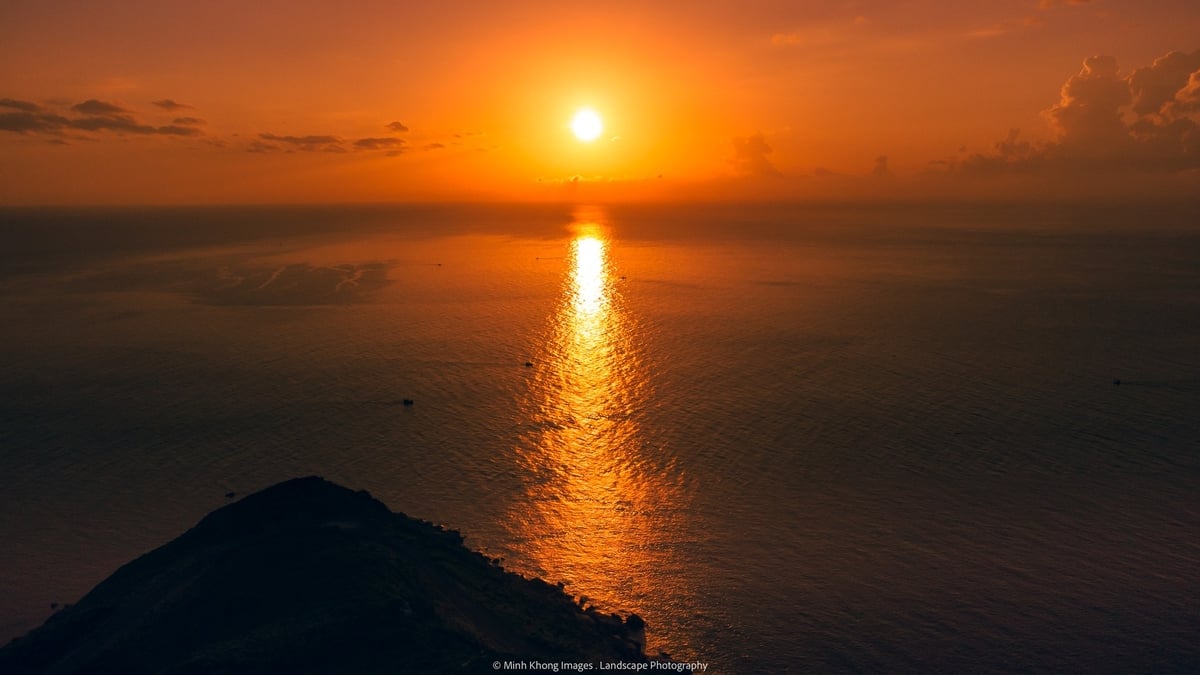




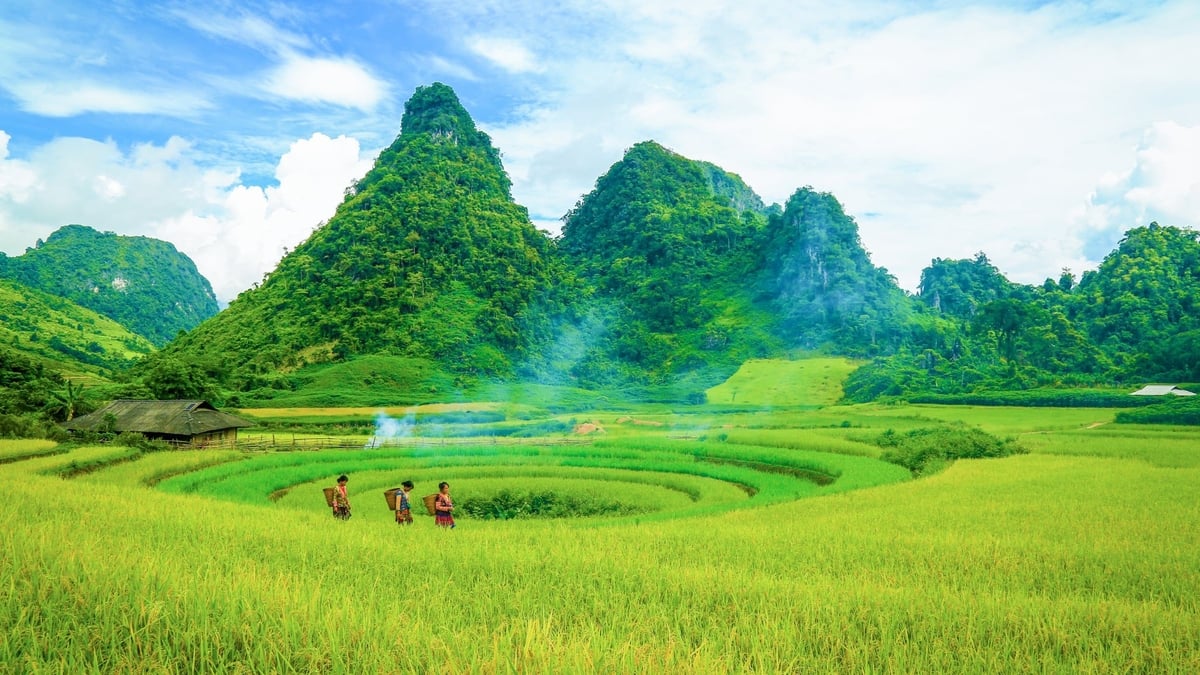
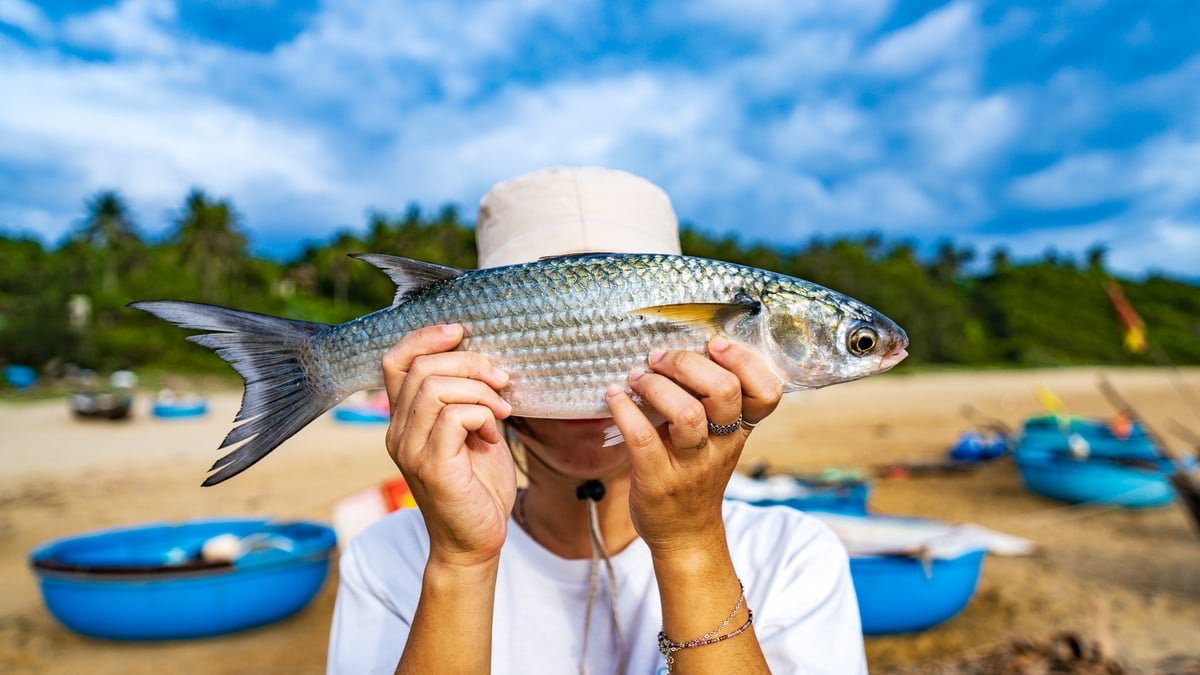
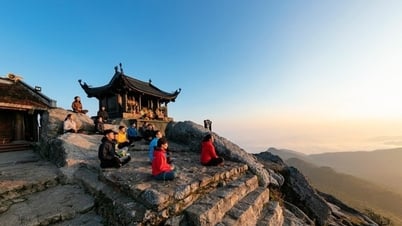

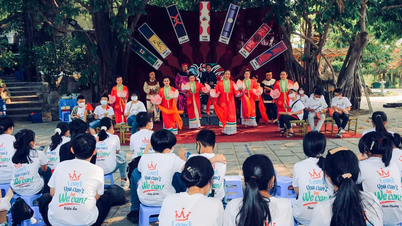

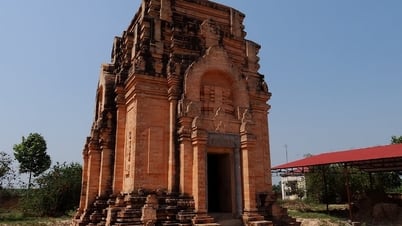

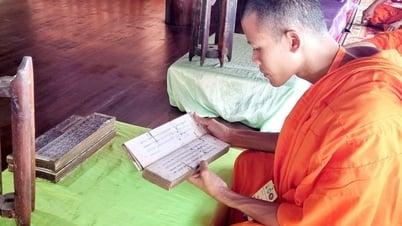



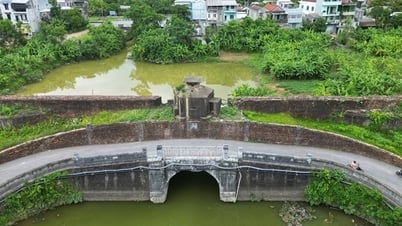

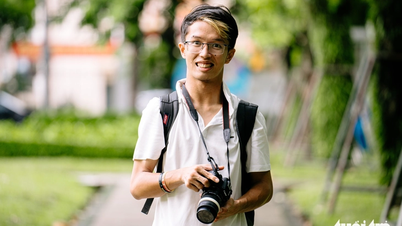



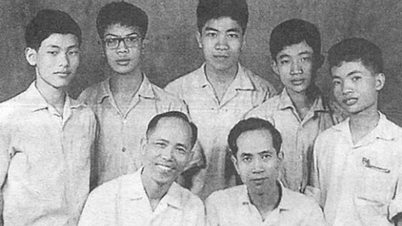
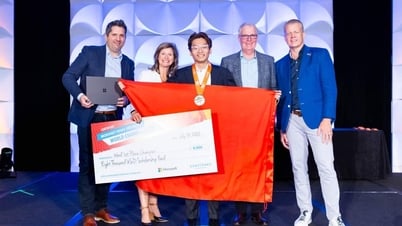

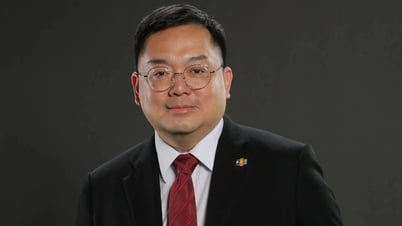

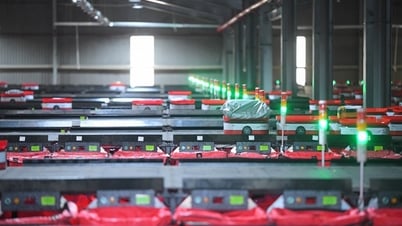

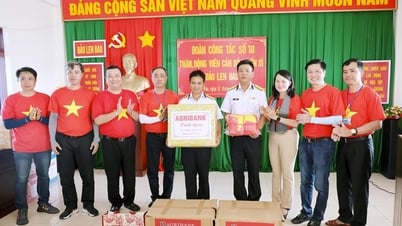

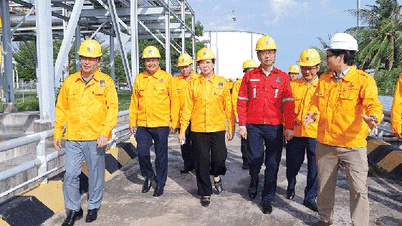

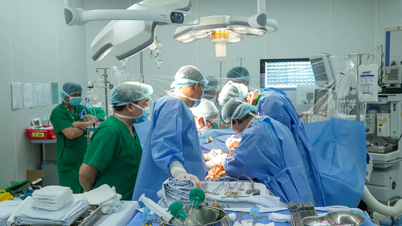

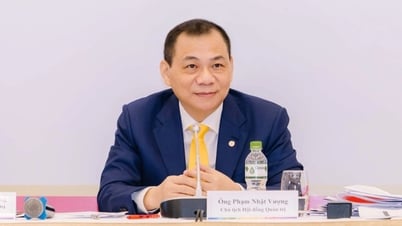

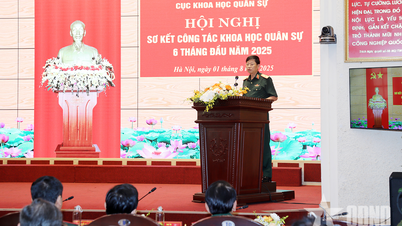



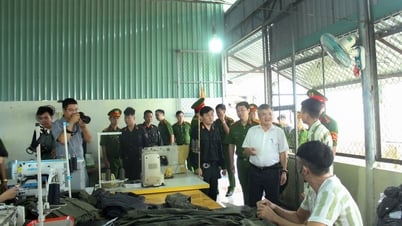

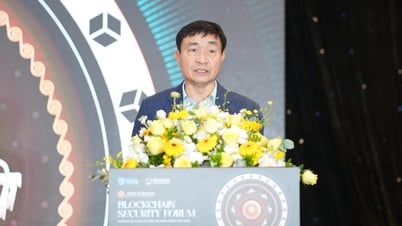
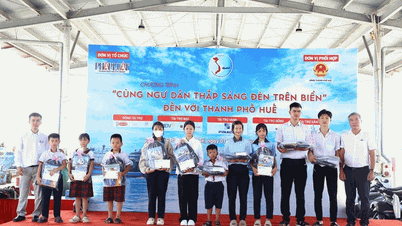

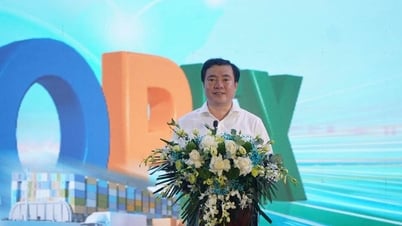

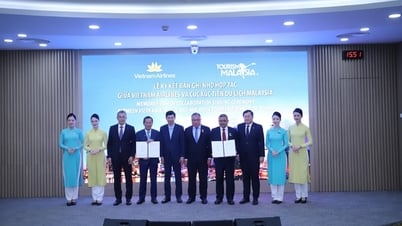

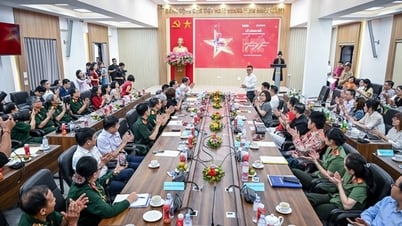
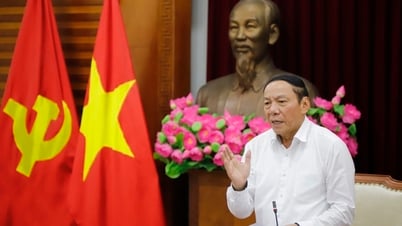




















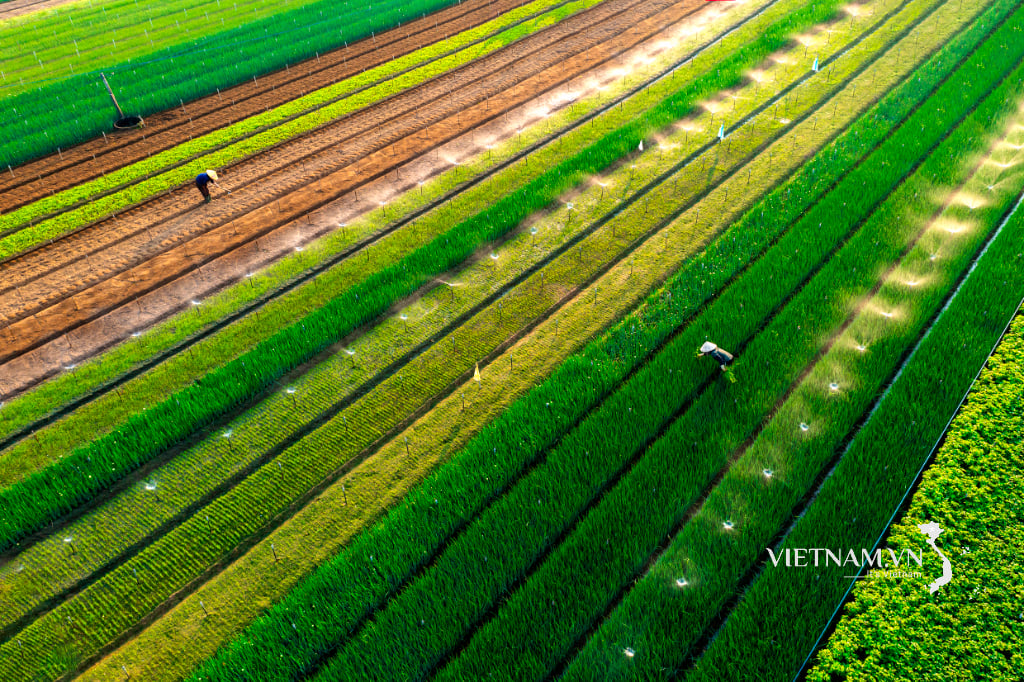
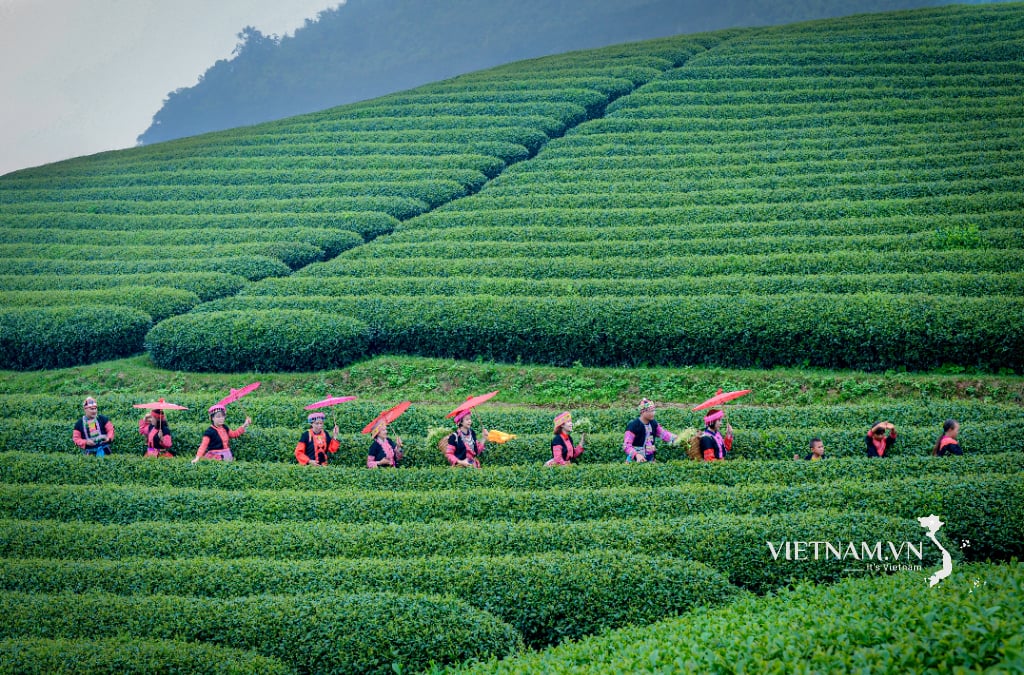

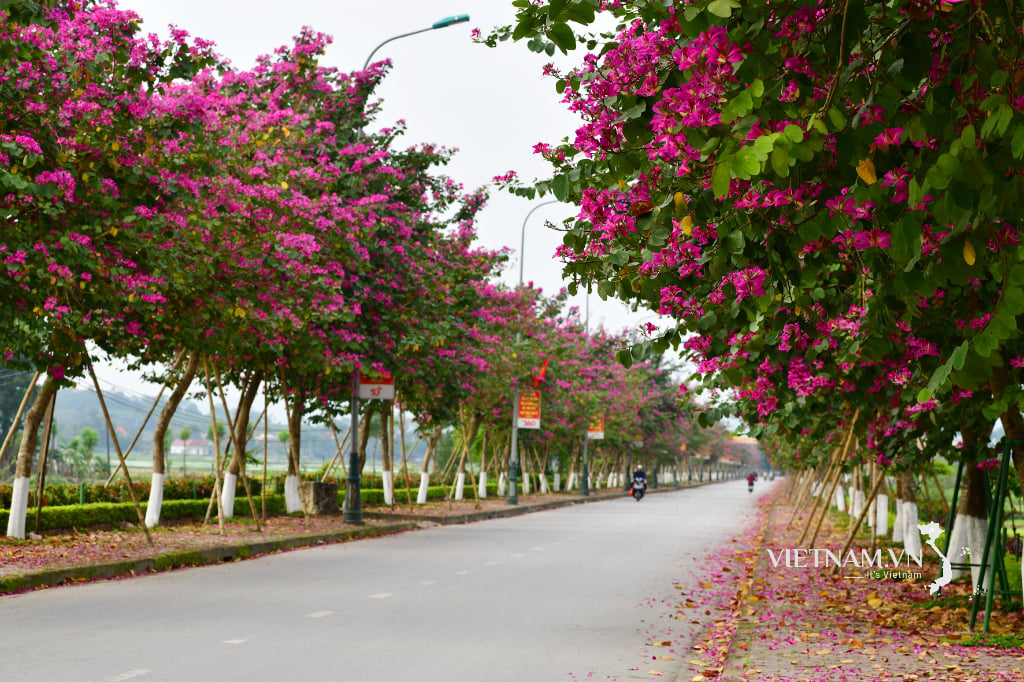
Comment (0)